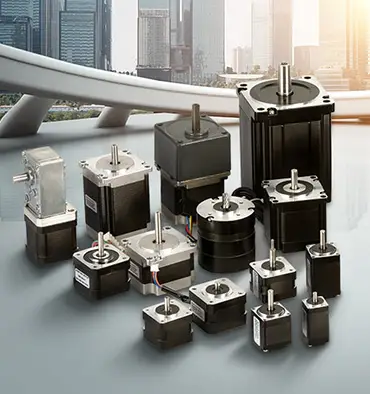How to make stepper motor run smooth?
Stepper motors are a type of electric motor that can be used for a wide range of applications, from small toys to large industrial machines. These motors are known for their precise control and ability to move in small, discrete steps, which makes them ideal for tasks that require precise positioning. However, sometimes stepper motors can produce a jerky or uneven motion, which can be frustrating and can impact the accuracy of the system. In this article, we will discuss how to make stepper motors run smoothly.
Subtitle: Tips for improving stepper motor performance
There are several factors that can affect the smoothness of a stepper motor, and addressing these factors can help improve its performance. Here are some tips for making stepper motors run smoothly:
-
Use the right power supply: One of the key factors that can affect the smoothness of a stepper motor is the power supply. Stepper motors require a specific type of power supply known as a "chopper" drive, which provides a series of pulses to the motor that cause it to move. Using the wrong type of power supply, such as a simple DC power supply, can cause the motor to produce a jerky motion.
-
Reduce the load: Another factor that can affect the smoothness of a stepper motor is the load it is carrying. If the load is too heavy, the motor may struggle to move it smoothly, which can cause it to lose steps or produce a jerky motion. To improve the smoothness of the motor, try reducing the load or using a larger stepper motor that can handle the load more easily.
-
Adjust the current: The amount of current that flows through the stepper motor can also affect its smoothness. If the current is too low, the motor may not have enough power to move the load smoothly, which can cause it to lose steps or produce a jerky motion. On the other hand, if the current is too high, the motor may overheat and produce a jerky motion due to thermal effects. To improve the smoothness of the motor, try adjusting the current to a level that is appropriate for the load and application.
-
Use a higher step resolution: Stepper motors are typically rated by their step resolution, which is the smallest angle they can move in a single step. For example, a motor with a step resolution of 1.8 degrees can move in increments of 1.8 degrees, while a motor with a step resolution of 0.9 degrees can move in increments of 0.9 degrees. Using a motor with a higher step resolution can improve the smoothness of the motion, as the motor will be able to make smaller, more precise steps.
-
Use microstepping: Another way to improve the smoothness of a stepper motor is to use microstepping, which is a technique that allows the motor to move in even smaller increments than its rated step resolution. Microstepping works by dividing each step into multiple smaller steps, which can improve the smoothness of the motion. To use microstepping, you will need a stepper motor driver that supports this feature, and you will need to adjust the driver settings to enable microstepping.
By following these tips, you can improve the smoothness of a stepper motor and make it run more smoothly. Keep in mind that the specific steps you need to take will depend on the type of stepper motor you are using and the specific factors that are affecting its performance. If you encounter any problems or have questions, you can consult the motor manufacturer or seek professional help to troubleshoot the issue.


Leave a Reply